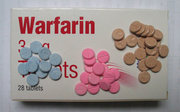FORMER U.S. Sen. Edward Brooke hangs up the phone and tells his wife, Anne, that the doctor said the lump she felt under his right nipple is breast cancer. He tries to console her, all the while thinking:
"Male breast cancer? Come on! I've never smoked a cigarette in my life. I am not a drinker. I eat healthy and I exercise. How could it possibly be?"
But Brooke, who was the first Black senator since Reconstruction and who is now a gentleman farmer on a 151-acre farm in Warrenton, Va., near Washington, D.C., was one of 1,500 men diagnosed with breast cancer in 2002. As a Black man, he, like actor Richard Roundtree, was twice as likely to develop breast cancer.
Brooke initially ignored his symptoms because he didn't think breast cancer could happen to him. He occasionally felt pain on the right side of his chest and dismissed it as gas. But the realization that he could have a more serious problem started last September when he felt pain around his rib cage two days after pulling up large sunflower stalks from his garden. This pain, along with a lump under his right nipple, made his wife call their family doctor for an immediate appointment.
Brooke's doctor gave him X-rays, took blood, examined his ribs and agreed that the pain was probably a pulled muscle that needed heat. As the 82-year-old former senator was leaving the doctor's office, he remembered to tell him about the lump under his right nipple. The doctor examined Brooke's breasts--giving him his first breast exam--and prescribed a mammogram. "I had never thought of men having mammograms," Brooke says. "Mammograms are for women."
Brooke got a mammogram that day. "The mammogram was not as painful and much easier than I thought it would be," he says. But when the radiologist reviewed his X-rays and immediately had him take a sonogram without giving him an explanation, Brooke became concerned.
Later that afternoon, the doctor told Brooke he had a tumor and sent him to a specialist for a biopsy to find out if the tumor was malignant. Two days later, Brooke was told that the tumor was cancerous. He also discovered that the disease, though rare, is not uncommon and that nearly 400 men die from it annually.
Brooke, who was a U.S. senator from Massachusetts from 1966 to 1979, immediately called his longtime friend surgical oncologist Dr. LaSalle D. Lefall Jr., the Charles R. Drew professor of surgery at the Howard University College of Medicine and chairman of the Susan G. Komen Breast Cancer Foundation. Dr. Lefall arranged for Brooke to meet with Dr. Christine B. Teal, a breast cancer surgeon and head of the George Washington University Breast Cancer Center.
When the Brookes arrived at the Breast Cancer Center in Washington, D.C., they noticed with amusement that the waiting area was decorated in pink and purple and that Brooke was the only man there.
Brooke asked Dr. Teal, "How in the world did I get breast cancer?" She said she couldn't answer him specifically and pointed out that men and women both have breast tissue and share several risk factors, including a family history of the disease, aging, radiation exposure, and an increased level of the female hormone estrogen.
The couple considered the options, and decided the former senator would have a modified radical double mastectomy by excising the nipple and areola complex, making an ellipse of skin without removing any muscle. Even though his left breast didn't show signs of cancer, he agreed to have the left breast tissue, but not the nipple, removed for precaution and symmetry.
The Brookes continued with their daily routines for the next 11 days until the scheduled surgery. They went to luncheons, out with friends and flew to meetings in Boston where Brooke still has political connections.
The couple didn't want anyone to know about his pending surgery. Not even their children. "No one could possibly guess the anguish we were going through," Brooke says now.
The most painful part of September 24 came before the actual surgery when a small amount of radioactive material was injected into Brooke's breast to identify malignant sentinel lymph nodes. During surgery, two malignant sentinel lymph nodes were removed, along with 13 benign axially nodes.
The day he awoke in the intensive care unit, Brooke found a tube draining blood into a receptacle attached to the left side of his chest and two tubes and receptacles attached to the right side.
When he went home or went out in public, he concealed the receptacles in his shirt pockets. He took the painkiller Percocet, which helped him most with the intense pain of getting in or out of bed or a chair.
The Brookes decided not to tell anyone. "We knew we would have to tell her mother, the children and the grandchildren, but only when it was all over and we could see them face-to-face, not over the phone," he says.
When Brooke met with his oncologist, Dr. Robert Siegel, medical director of the George Washington University Cancer Center, he was relieved to learn that he wouldn't have to take chemotherapy or radiation therapy. "I could keep what thinning hair I had" Brooke says. However, he was prescribed tamoxifen, which he is to take for the next five years to decrease the effects of estrogen. He also has to take coumadin to combat blood clotting. Even though the medications leave him feeling weak, Brooke says, "I'm one of the lucky ones. I'm a survivor."
With hardly any time to recuperate, the former senator kept a speaking engagement two weeks later at the First Baptist Church of Warrenton. But he dreaded having to shake hands because of the pain he felt moving his right arm. So Anne Brooke suggested that he wear his arm in a sling. Even so, it took a lot of mental and physical effort just to put on his suit and tie, lace his shoes, get in the car and walk up several flights of stairs at the church.
A few days later, the Brookes were back in D.C. for bone scans and to have fluid drained from his swelling right side. The next week, during the height of the sniper attacks in the area, the Brookes again left their farm in Warrenton to return to D.C. for X-rays of his back and neck to check out "suspicious findings." They were relieved when Dr. Teal said the X-rays only revealed signs of aging.
"Through all this I continued to say my daily prayers and to read my Daily Word, knowing and believing that above all God is the Supreme Surgeon and the Divine Healer" the former senator says.
By October 26, Brooke's 83rd birthday, the couple was in Boston for the unveiling of his portrait at the courthouse. Even though several members of their family attended the event, they decided not to tell them about his breast cancer surgery.
On the advice of his friend, Dr. Lefall, and his surgeon, Dr. Teal, Brooke later went public with his experience. "The good that can come from your going public far outweighs any invasion of your personal privacy," Dr. Lefall says he told Brooke. "Other people will say, 'If it happened to a senator and a movie star, it can happen to me.'"
The former senator is working with the Komen Foundation to publicize male breast cancer and encourage doctors to make routine examinations of men's breasts. He is also urging insurance companies to cover mammograms for men. "I have no qualms," he says, "no machismo hang-ups and no problem with publicly saying I have breast cancer."
Facts About Men and Breast Cancer
* Men tend to discover they have breast cancer between ages 60 and 70.
* Men, like women, should examine their breasts monthly for any changes, including a lump, nipple discharge, skin dimpling, nipple redness or scaliness, or an inverted nipple.
* Mammograms for men are not covered by insurance.
*Two Black men per 100,000 develop breast cancer, compared to one White man per 100,000.
* Black men, like Black women, tend to be diagnosed with breast cancer later.
* Daily alcohol consumption, high levels of radiation exposure, high levels of estrogen, inherited gene mutation, a family history of breast cancer, men with Klinefelter's syndrome, and a disturbance in the liver's metabolization are risk factors that increase the chance of developing breast cancer.
* A lumpectomy for a man is similar to a mastectomy for a woman because men have less breast tissue.
* A tumor in a man's breast can feel like a pulled muscle because the breast tissue is thinner than a woman's and the tumor can be sitting on top of a muscle.
* Treatment for men and women with breast cancer is the same and involves a combination of surgery, radiation, chemotherapy or hormone therapy.
COPYRIGHT 2003 Johnson Publishing Co.
COPYRIGHT 2003 Gale Group



